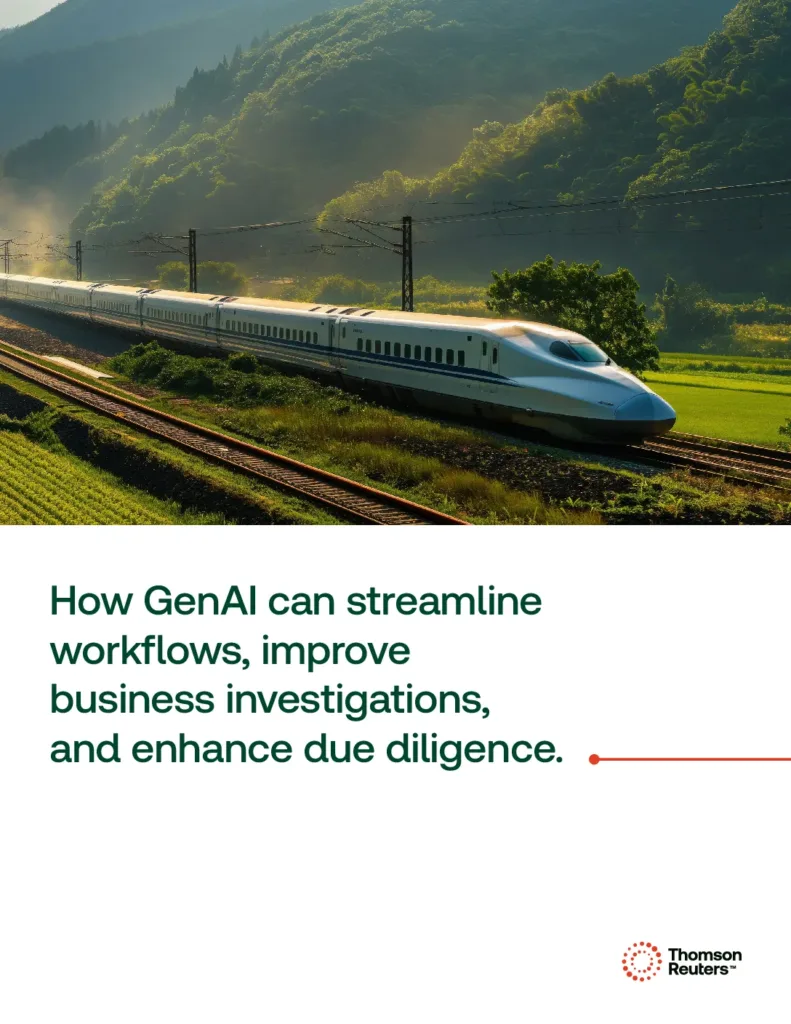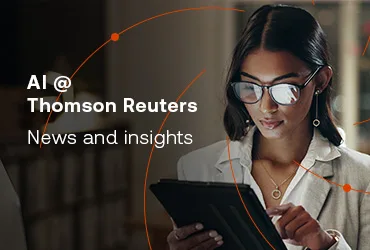Ever since ChatGPT was released in November 2022, techno-optimists have been insisting that generative artificial intelligence (GenAI), the technology behind ChatGPT, is going to transform the way people work. The technology will usher in a new era of productivity, they say, one in which GenAI enhances and augments human capabilities, making the work people do more valuable and creative while helping professionals save crucial time.
But what is that transformation going to look like? And how will it look for Risk & Fraud professionals?
GenAI: The value proposition for business
Many professionals are already experimenting with publicly available GenAI platforms such as ChatGPT and CoPilot to see what the technology can do for them. But in a business or government setting, there are different factors to consider.
At a company, for instance, the decision to adopt GenAI also means assessing whether the results are accurate, under what circumstances the technology can be safely (or legally) used, and to what extent the enterprise can benefit from its investment in GenAI.
For businesses, the value proposition for GenAI isn’t about how well it answers questions on a wide variety of subjects, it’s about how well the technology can solve a specific problem or how much it improves or enhances the execution of a common application or task.
If it can be proven that a GenAI tool is more efficient or that it adds tangible value in some other way, incorporating it into a business’s workflow might make sense. If not, many businesses will likely wait for a solid use case to emerge, or until a specialized task—such as a chatbot assistant—can be assigned to GenAI as an initial experiment.
An exponential leap in power
The other way many business and professional users are going to start encountering GenAI is through a tool or additional set of capabilities embedded in a business application they may already be using.
For example, Thomson Reuters offers a wide range of software solutions for businesses and governments, most of which incorporate various forms of AI, whether customers know it or not. Until now, however, most iterations of AI from Thomson Reuters have been based on machine-learning-based algorithms, which are ideal for such repetitive tasks as tax calculations, inventory management, payroll processing, and other common business operations.
Though machine learning is quite useful, GenAI represents an exponential leap in the power and capabilities of AI technology, making it possible to envision a vast new frontier of potential applications and innovations. No longer bound by strict algorithmic rules, GenAI can mine much larger sets of data and expand new ideas and insights from that data—a feat once thought impossible. GenAI can also “heal” itself by diagnosing problems and correcting errors without any human intervention.
So what might a real-world professional application of GenAI look like?
GenAI in the real world: CLEAR’s Risk Analysis Summary
Thomson Reuters is at the forefront of GenAI research, and as such has recently developed a new GenAI tool that works within the company’s industry-leading CLEAR investigative software.
Called the Risk Analysis Summary (RAS), this new GenAI-powered tool is designed to reduce the time it takes CLEAR users to investigate and conduct due diligence on businesses, corporations, and potential vendors.
Law enforcement, financial institutions, corporations, and governments all use CLEAR for investigative work because the software digs much deeper into public sources of data (court records, business filings, DMV records, sanction lists, social media, etc.) than any Google search can. The software also has access to proprietary databases containing information that may also be relevant to corporate risk assessments and law-enforcement investigations.
Decision-making simplified
Though CLEAR has a user-friendly dashboard and a robust set of analytical tools, the reports CLEAR generates can be very large, which sometimes makes it difficult to locate specific pieces of information or to decide when further investigation is advisable or necessary.
To simplify the decision-making process for CLEAR users, the RAS report uses GenAI to produce a concise, easy-to-read summary of the key data points in any given company, all presented in a couple of pages; simplifying the risk analysis process.
A typical RAS due-diligence report might contain:
- A company overview: A narrative description of the business in question
- A risk overview: A GenAI produced narrative of potential risks identified in the company’s report
- Key business details: legal names, addresses, business filings, ticker symbols, and information on key personnel and beneficial owners
- Adverse records/media review: A list of any adverse records, media events, or sanctions that mention or involve the business in question
- Social media activity: Links to a company’s social media presence
In sum, the GenAI-powered RAS tool provides a brief but thorough overview of key search details to help users assess risks and identify areas of concern that might merit further investigation. Links back to the original source documents are also included.
Saving time, improving performance
The intent behind the RAS is to give CLEAR users a tool they can use to make more efficient use of their time, which should result in more effective risk assessments, improved individual performance, and lower overall operational costs. Users can also direct the time they save toward conducting deeper due diligence, processing more accounts, or performing other important tasks.
CLEAR’s new RAS tool is just one example of how Thomson Reuters is incorporating GenAI into existing software applications. The important thing to recognize is that incorporating the RAS tool into CLEAR is not going to put anyone out of work; rather, it is available to help users improve and enhance their screening abilities and make more efficient, effective use of their time on the job.
To find out more about CLEAR’s investigative features to resolve challenges quickly, request a free demo today.
 |
Thomson Reuters is not a consumer reporting agency and none of its services or the data contained therein constitute a ‘consumer report’ as such term is defined in the Federal Fair Credit Reporting Act (FCRA), 15 U.S.C. sec. 1681 et seq. The data provided to you may not be used as a factor in consumer debt collection decisioning, establishing a consumer’s eligibility for credit, insurance, employment, government benefits, or housing, or for any other purpose authorized under the FCRA. By accessing one of our services, you agree not to use the service or data for any purpose authorized under the FCRA or in relation to taking an adverse action relating to a consumer application.










